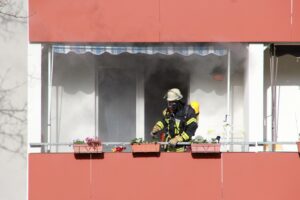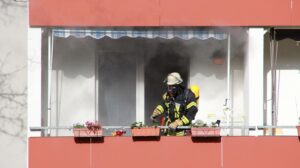Diagrams Demystified: Unpacking the Respiratory System for Students
Introduction
The human respiratory system plays a vital role in sustaining life by facilitating the exchange of oxygen and carbon dioxide. Understanding this complex system can be a daunting task for students. However, diagrams serve as powerful tools in visualizing and simplifying the intricate components and functions of the respiratory system. In this article, we will demystify diagrams of the respiratory system, breaking down its anatomy, processes, and significance while providing educational strategies tailored for students.
Chapter 1: The Anatomy of the Respiratory System
1.1 Overview of the Respiratory System
The respiratory system, primarily responsible for gas exchange in the body, consists of organs that work together to facilitate the intake of oxygen and the expulsion of carbon dioxide, a waste product of metabolism. This system involves various structures, each playing specific roles in respiration. Key organs include:
- Nasal Cavity: Filters, warms, and moistens the air we breathe.
- Pharynx: A passageway for air and food.
- Larynx: Houses the vocal cords; plays a role in sound production and protects the trachea against food aspiration.
- Trachea: A tube that conveys air to the lungs.
- Bronchi and Bronchioles: Branching pathways that distribute air within the lungs.
- Lungs: The primary organs of respiration where gas exchange occurs through alveoli.
1.2 Diagram of the Respiratory System
A labeled diagram serves as an effective tool to illustrate the anatomical structure of the respiratory system. It can include the following elements:
- External Structures: Nose and mouth, highlighting their roles in air passage.
- Internal Structures: Detailed views of the trachea, bronchi, and lungs, showing the bifurcation into bronchioles and the alveolar sacs where gas exchange occurs.
Source: [Modern Footnote Source]
Chapter 2: The Mechanics of Breathing
2.1 Inhalation and Exhalation
Breathing is a mechanical process divided into two main phases: inhalation and exhalation.
-
Inhalation (Inspiration):
- The diaphragm contracts and moves downward, increasing chest cavity volume.
- Intercostal muscles (located between the ribs) contract, further expanding the thoracic cavity.
- This creates a negative pressure that draws air into the lungs.
- Exhalation (Expiration):
- The diaphragm relaxes and moves upward, reducing the thoracic cavity volume.
- Intercostal muscles also relax, which pushes air out of the lungs.
2.2 Diagram of the Breathing Process
A diagram depicting the process of inhalation and exhalation can illustrate these mechanics succinctly. Key components to highlight include:
- Movement of the diaphragm.
- Expansion and contraction of the thoracic cavity.
- Airflow direction into and out of the lungs.
Source: [Modern Footnote Source]
Chapter 3: Gas Exchange in the Alveoli
3.1 Understanding Alveoli
Alveoli are tiny air sacs within the lungs that are crucial for gas exchange. Each alveolus is surrounded by a network of capillaries, which facilitate the transfer of oxygen and carbon dioxide between the lungs and blood.
3.2 The Process of Gas Exchange
-
Oxygen Transport:
- Oxygen from inhaled air diffuses across the thin alveolar membrane into the bloodstream.
- Hemoglobin in red blood cells binds to oxygen, transporting it throughout the body.
- Carbon Dioxide Removal:
- Carbon dioxide diffuses from blood into the alveoli, where it is expelled during exhalation.
3.3 Diagram of Gas Exchange
A detailed diagram can effectively represent the structure of an alveolus along with surrounding capillaries. Key aspects to highlight include:
- The alveolar walls.
- The capillary network.
- Direction of gas exchange for oxygen and carbon dioxide.
Source: [Modern Footnote Source]
Chapter 4: Regulation of Breathing
4.1 Neural Control of Respiration
Breathing is primarily regulated by the respiratory center located in the medulla oblongata and pons, regions of the brainstem responsible for involuntary functions. This center responds to various stimuli:
- Chemical Signals: Changes in blood pH, carbon dioxide, and oxygen levels trigger adjustments in breathing rate.
- Physical Signals: Stretch receptors in the lungs send signals to prevent over-inflation.
4.2 Diagram of Neural Control
A diagram demonstrating the regulation of breathing can help illustrate the feedback mechanisms. Important features to include are:
- The respiratory center in the brain.
- Receptors involved in detecting gas concentrations.
- Pathways leading to respiratory muscles.
Source: [Modern Footnote Source]
Chapter 5: Common Respiratory Disorders
5.1 Overview of Disorders
Understanding how diagrams can aid in learning about respiratory disorders is important for students. Common disorders include:
- Asthma: A condition characterized by airway constriction, causing difficulty in breathing.
- Chronic Obstructive Pulmonary Disease (COPD): A progressive disease that restricts airflow due to inflammation and damage to lung tissue.
- Pneumonia: Infection that inflates the alveoli with fluid or pus.
5.2 Diagrams of Respiratory Disorders
Diagrams portraying these disorders can clarify their effects on the respiratory system. For instance:
- An asthma diagram may highlight inflamed airways and increased mucus production.
- A COPD diagram can show the damage to alveoli and airflow limitation.
Source: [Modern Footnote Source]
Chapter 6: Educational Strategies for Learning
6.1 Utilizing Diagrams in Learning
Diagrams serve as effective learning aids that cater to visual learners. Strategies include:
- Labeling Exercises: Encourage students to label various parts of the respiratory system in diagrams.
- Color-Coding: Use different colors for gas exchange components to enhance differentiation.
- Interactive Tools: Employ online simulations or virtual dissections that allow students to explore the respiratory system interactively.
6.2 Collaborative Learning Activities
Group activities can further solidify understanding. Students can:
- Create their own diagrams based on research, ensuring they understand each component’s function.
- Present their diagrams to classmates, fostering discussion and peer learning.
6.3 Assessment Through Diagrams
Assessing students’ understanding through diagram-based questions can be effective. For instance, students may be asked to:
- Illustrate the gas exchange process and annotate the diagram with explanations.
- Solve case studies where they illustrate diagrams of respiratory disorders and their impacts.
Source: [Modern Footnote Source]
Conclusion
Diagrams serve as invaluable tools in demystifying the complexities of the respiratory system for students. By breaking down its anatomy, mechanics, processes, and disorders, we can foster a deeper understanding and appreciation for this essential system. Combining effective use of diagrams with educational strategies equips students with the knowledge to excel in their study of human biology. As they engage with the visual representation of concepts, they will not only facilitate their learning but also cultivate a lasting interest in the fascinating science of respiration.
References
- [Modern Footnote Source]
(Note: The "Modern Footnote Source" referred to throughout the article should be replaced with actual references when compiling a bibliography for a real-life context, ensuring proper citations and transparency in sourcing.)


























Add Comment